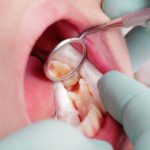
Restoration of class I or II cavities in posterior teeth a using resin-based composite (RBC) is a regularly used operative technique. Lining materials are commonly used under restorations to protect the pulp being advocated to reduce thermal conductivity. Sealers like liners are advised to reduce thermal conductivity but are used to bond the RBC to the tooth material. However, as RBC have a thermal conductivity similar to the tooth there is some debate over whether they are required.
The aim of this Cochrane review update was to assess the effects of using dental cavity liners in the placement of Class I and Class II resin-based composite posterior restorations in permanent teeth in children and adults.
Methods
Searches were conducted in the Cochrane Oral Health’s Trials Register, Cochrane Central Register of Controlled Trials (CENTRAL). Medline, Embase, LILACS BIREME Virtual Health Library (Latin American and Caribbean Health Science Information database, the US National Institutes of Health Ongoing Trials Register (ClinicalTrials.gov) and the World Health Organization International Clinical Trials Registry Platform with no restrictions on language or date of publication.
Randomised controlled trials (RCTs) of parallel or split-mouth design assessing the effects of the use of liners under Class I and Class II posterior resin-based composite restorations in permanent teeth (in both adults and children).
Results
- 8 studies (3 split-mouth, 5 parallel) involving a total of 700 patients were included.
- 5 studies were considered to be at high risk of bias, 3 at unclear risk.
- 7 studies evaluated postoperative hypersensitivity measured by various methods. There was inconsistent evidence regarding postoperative hypersensitivity (either measured using cold response or patient-reported), with a benefit shown at some, but not all, time points (low-quality evidence).
- 4 trials measured restoration longevity.No difference in restoration failure rates were shown at one-year follow-up, with no failures reported in either group for three of the four studies; the fourth study had a risk ratio = 1.00 (95%CI; 0.07 – 15.00) low-quality evidence.
- 3 studies evaluated restoration longevity at two years follow-up and, again, no failures were shown in either group.
- No adverse events were reported in any of the included studies.
Conclusions
The authors concluded: –
There is inconsistent, low-quality evidence regarding the difference in postoperative hypersensitivity subsequent to placing a dental cavity liner under Class I and Class II posterior resin-based composite restorations in permanent posterior teeth in adults or children 15 years or older. Furthermore, no evidence was found to demonstrate a difference in the longevity of restorations placed with or without dental cavity liners.
Comments
This Cochrane review update did not identify any new published evidence since it was first published (Dental Elf – 2nd Nov 2016). The available evidence is inconsistent and of low-quality and as no trials were available in children under the age of 15 what little there is should not be applied to permanent teeth in younger children. Any future studies should be well conducted and reported according to the CONSORT Statement ( www.consort- statement.org) because a range of outcome measures have been used in the included studies the ability to compare findings would be greatly facilitated by agreeing common outcome standards as recommended by the Core Outcome Measures in Effectiveness Trials ( COMET) Initiative ( www.comet-initiative.org
Links
Primary Paper
Schenkel AB, Veitz-Keenan A. Dental cavity liners for Class I and Class II resin-based composite restorations. Cochrane Database Syst Rev. 2019 Mar 5;3:CD010526. doi: 10.1002/14651858.CD010526.pub3. [Epub ahead of print] Review. PubMed PMID: 30834516.
Other references
Dental Elf – 2nd Nov 2016

Thank you for writing such a well-informed and well-written review.
When using the selective caries removal strategy (removal t firm or soft dentine), I was wondering if using a liner would help.
Thank you
Hi
Thanks for your comments
Having a look at two of our other blogs may be helpful Calcium hydroxide lining
Cavitated dentine lesions